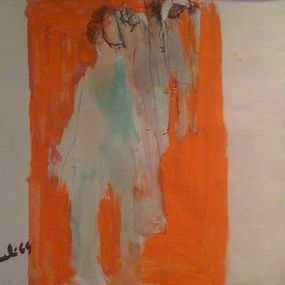
1969 Paris Orange Paris Le Barbu Man with a beard
Jochen Michaelis
Painting - 37.5 x 52.5 x 0.5 cm Painting - 14.8 x 20.7 x 0.2 inch
$2,164
Painting : oil, mixed media 37.5 x 52.5 cm 14.8 x 20.7 inch
Free returns within 14 days
Authenticity guaranteed
Learn moreUnique work
Hand-signed by artist
Sold with certificate of Authenticity from the gallery
Invoice from the gallery
Painting: oil, mixed media
37.5 x 52.5 cm 14.8 x 20.7 inch Height x Width x Depth
Beige wood frame with glass
49 x 63 cm 19.3 x 24.8 inch
Artwork sold in perfect condition
Artwork location: France
About the seller
GALERIE LISE CORMERY • France
Artsper seller since 2020
Vetted Seller
This seller rewards your purchases of multiple artworks


Painting - 37.5 x 52.5 x 0.5 cm Painting - 14.8 x 20.7 x 0.2 inch
$2,164
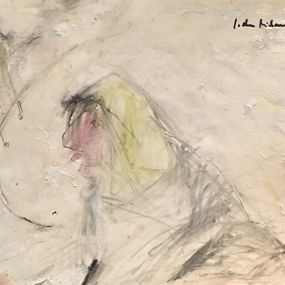
Painting - 36.5 x 53 cm Painting - 14.4 x 20.9 inch
$1,609
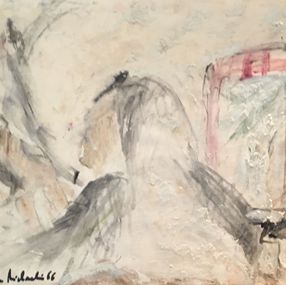
Painting - 37.5 x 52.75 x 0.5 cm Painting - 14.8 x 20.8 x 0.2 inch
$1,609

Painting - 37.5 x 52.5 cm Painting - 14.8 x 20.7 inch
$2,164

Painting - 37.5 x 52.5 x 0.5 cm Painting - 14.8 x 20.7 x 0.2 inch
$2,164
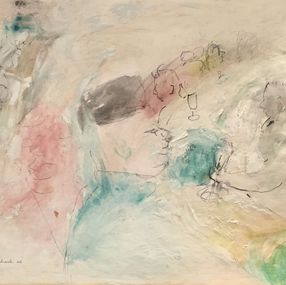
Painting - 37.5 x 52.5 cm Painting - 14.8 x 20.7 inch
$2,164

Painting - 37.5 x 52.5 cm Painting - 14.8 x 20.7 inch
$2,164
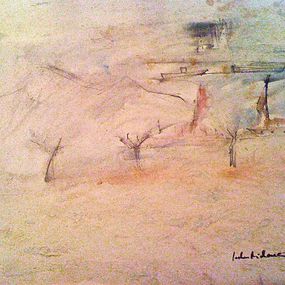
Painting - 26 x 37.5 x 0.5 cm Painting - 10.2 x 14.8 x 0.2 inch
$2,164

Jochen Michaelis was born in Potsdam in 1938, he is the grandson of Georg Michaelis (1857-1936), Minister-President of Prussia and, in 1917, Chancellor of the German Empire. He studied painting at the KunstAkademie in Kassel, Germany. In Paris, he came to study at a very young age at the Beaux-Arts in the studio of Chapelain Midy and also practiced the art of lithography with Clarin, a print technique that he continued to perfect at the Pratt Graphis Center in New York.
Michaelis, a keen observer and painter of scenes of life, is a tireless traveler, his imagination feeds the paintings of his numerous exhibitions in Paris, New York, Berlin and his trip to Mexico.
In Paris, he began his dazzling career as a painter at only 20 years old and his works were soon in all the collections that matter. All the press and the Parisian Art Critic saluted his talent from 1958, a few extracts from these important texts here illustrate his talent and the praise his work arouses.
For the art critic of the newspaper "ARTS" "Michaelis shows a fine talent. A layout which uses all the resources of the Bonnard or Lautrec poster, brings out in the foreground ambiguous faces drowned in immense earthy spaces, a blur of moving silhouettes scattered in the gray. Michaelis remains fascinated by the isolation of beings in crowds, by their vulnerability, their miserability. " For "Le Monde" " At twenty, Michaelis produced great, energetic and personal compositions where humor does not lose its rights." In "Combat" , a newspaper representing the French left, then the most powerful media for art criticism, with prestigious pens such as Albert Camus, Raymond Aron, André Gide, half a page of text "Michaelis is devoted to Michaelis in 1958. , it is a dream sometimes bitter, sometimes caricatural and full of tenderness. There is a frozen humor but also ardor and violence. It is a painting of manners and society, even if the world is ridiculous. " and "Combat" photographs him in the midst of dozens of his paintings strewn on the ground, among them, we see "La Parisienne au faux cils" painted in his expressionist way. For "Hors-Côte", " Michaelis observes humanity with a sharp eye: the world where we have fun, sadly at the cabaret, the girl who rolls her poor bump at the Porte Saint Denis, the Belles and the Beasts ferociously inhuman in their frenzied taste for life, with the slapping heads of revelers bathing in a rosy atmosphere of infinite tenderness. " Almost thirty years later, in 1984, "The Art Lover" wrote: "Watching Paris from the rooftops and transmitting it in a poetic interpretation, Michaelis and his stylized compositions are the reflection of everyday life. Passers-by, strollers, children inhabit these works in which his colors reject anguish." The art critic Gérard Weber writes that "as a young student at the Beaux-Arts, he went diving at the Moulin Rouge bistro, his workshop at Place Saint André des Arts became an artistic rendezvous. Michaelis's paintings, a snapshot of poetic emotion , - I have known them for twenty-five years, with a design that gives shape to the dreams of the eye. " Lise Cormery in her book "The Art of the Paris School of Post-War" writes: "It is not good to be German in France in the 50s, Berlin is destroyed, the wounds are still alive, yet Jochen Michaelis is so authentic, so charming and so devoted to painting that he becomes the favorite German artist of the post-war L'Ecole de Paris art market where he quickly finds his place and appreciates his life, which he calls "La Bohème" by quoting the Opera and Charles Aznavour. This handsome man, after having been the companion of a Grimaldi, settled for many years in Paris where he observed and painted scenes of life in Paris and Parisians, children, parents, workers and revelers in a dreamlike universe unlike any other and Parisian galleries exhibit his work, fortunately preserved, thanks to which we find this Paris which wants to chase away its dark ideas, full of joy and hope during the 50s, 60s and 70s. He painted this Paris, which has now disappeared, with its elegant knew how to dress inexpensively, its markets and its picturesque characters, caught on the spot in their daily life, on the way to their work or who meet at the corner bistro to remake the world. But if his work is poetic and dreamlike, it is not without denouncing the flaws in our societies, which did not escape the art critics of yesteryear.
In his 'PARIS LA NUIT', Michaelis paints the night owls that scatter in the city to better enjoy the nightclubs, theaters, nightlife,
In his WHITE PARIS, which the Utrillo of the 1910s loved in a figurative and architectural vein, Michaelis is interested in the human, the social, he paints and depicts two worlds that ignore each other at dawn, and his Paris Blanc plays on the melancholy of Paris, with its wan little mornings, its coffee rooms misted with alcohol, the fog that shrouds Paris with a pale veil all along the Seine. Michaelis observes two worlds that cross at dawn, the revelers or "Fêt'Arts" "Les Couche-tard" who come out of nightclubs and rush into the bistros that have just opened for a last coffee or cream. a last glass of alcohol, as workers rush through subway entrances and invisible sweepers are already starting their long day's work. The innocent, the lonely "The Awakened Dreamer", no doubt Michaelis himself observes, in a waking dream, the movement of these two worlds which ignore each other and share the time of Paris. There are those who are already busy while Paris is just awake. On the quays of the Seine emerge Parisians, but are they returning to finally sleep or are they on their way to a morning job? A whole real world and transcribed by the imagination of Michaelis is circumscribed in this enigmatic Paris which is agitated. Some people enjoy themselves fond of fashion which is out of fashion, we find there these gentlemen with headgear then very fashionable, the astrakhan toque, or dancing the Kazatchok in a club. All this shady little world animates the cafes. Michaelis does not forget the anonymous people, the crowd of Parisians, who greet each other then disappear in the pallor of day or night. Michaelis also questions us with his 1966 painting "Two tramps asleep in hope when day breaks on the Eiffel Tower", because yesterday as today two tramps are asleep in the hope of a new day dawning finally on our WHITE PARIS, the somnambulist, the tightrope walker, waiting for the hope of a Renaissance. Yesterday, in the same way, a tramp was hiding to sleep at night in the church of Saint Germain des Près, perhaps Michaelis in his bad days, certainly the great master of the Dark Way Mario Avati or Brancusi, who came on foot from Romania.
In its PARIS ORANGE, or PARIS RIT and PARIS DETRUIT, it is also The PARIS of the humble with "La Pelleteuse et les géraniums" and The PARIS of the arrogant of "Cocktail Party". Paradoxically, in this Paris of the Thirty Glorious Years, two worlds clash, The Paris of Humble and the Paris of L'arrogant.
In the Paris of Humble from "La Pelleteuse et les géraniums", The promoters' orange excavator does its work like a Parisian tries to survive in his Montparnasse being destroyed, in the hope of sparing his happy orange geraniums, like an act of peaceful resistance, punctuating the balcony of his modest home with seeds of life.
The Paris of L'arrogant, at the same time, with "Cocktail Party" and "Le Maître d'Hôtel", "Dancing in a box" is having fun and everything is allowed to well-off students. Paris vibrates with joie de vivre, in the 60s and 70s, life is still light and inexpensive there, a few students, "papa's sons", "provoke" and play at the grown-ups by making believe in a Revolution, even if "68" is only a Revolution of spoiled petty bourgeois children, they are allowed to do anything and they want power. This is how they will pick it up and never let go.
Meanwhile Michaelis, humble among the humble, chooses the color Orange for the dominant color of his paintings, he took out orange from the cupboards of the Academy in 1958 and soon artists, designers, haute couture, the loan- à-porter take on the color orange, which like a banner becomes like a hymn to energy, believed to be a better life.
Michaelis' gifts as an observer invite us into this now forgotten era when Paris was struggling in the orange effervescence. Urban fighters were bleeding orangey blood, clashing with nostalgia and the defense of a somewhat dilapidated Old Paris. And Paris Lumière fought for the Renaissance of its Enlightenment past, clashing violently against its slayers, lovers of concrete universes, in favor of a Paris City of Dust. The promoters and social landlords of the City of Paris are the new masters of the city of Paris and share it among themselves, like a huge cake they are going to feast on, destroying the artists' studios of Montparnasse and the buildings of the past stricken with he alignment of the Latin Quarter, where art flourished more than tickets, where artists at work, little known, remain the forgotten and must move. The inhuman and sprawling Defense raises its immense spurs. Meanwhile Michaelis, patiently and keenly observant, paints the birth of a new Paris, still full of hope and despair too. "
Some International solo shows
1958 Gallery of the Maison des Beaux-Arts Paris 1959 Galerie Glaser-Cordier, Paris 1962 1963 Permanent J. Montana Art Gallery 124, rue du faubourg Saint Honoré, Paris 1964 1967 Jacques Casanova Gallery, Palais-Royal, Paris 1971 Gallery Fischbacher, 33, rue de Seine, Paris 1979 Galerie Raesfeld, Cologne, Germany 1979 Galerie Nonson, 133 Wooster Street, Soho, New York 1982 Profile Gallery, 113 James Street, New York 1984 Galerie Raspail Rive Gauche, 221, blvd Raspail, Paris 1985 Profile Gallery, 113 Jane Street, New York 1985 1986 Galerie du Marais, 33, rue des Francs Bourgeois, Paris 1986 Galerie Raspail Rive Gauche, 221, blvd Raspail Paris 1987 Galerie du Marais, 33, rue des Francs Bourgeois, Paris 1988 Gallery Tullagasse 2, 7814 Breisach am Rhein, Germany 1989 Reece Gallery, 24 West 57 Street, New York 1991 1992 Galerie Lise Cormery Olympiades des Arts 1992 Montserrat Gallery, 584 Broadway, New York 1992 The Emerging Collector Gallery, 62, 2 nd Avenue, New York 1992 Gallery B assler Merzhauserstrasse 76, Freiburg, Germany 1992 Galerie Tullagasse 2, Breisach am Rhein, Germany 1993 Montserrat Gallery, 584 Broadway, New York 1993 Galerie Lise Cormery 1993 1994 1995 1997 Galerie Museum Egon Von Kameke, Postdam, Germany. Lukacs Gallery Toronto & De Silgahi Gallery, Burlington, Canada.
PARIS OLYMPIADS Michaelis will be exhibited by Galerie Lise Cormery in 1991 and 1992, during the Olympiades des Arts in Paris, Michaelis being part of the German delegation. In 1991 and 1992, during international events under the aegis of President Mitterrand and the Mayor of Paris, Jacques Chirac, he was selected to represent Germany with his paintings of "Paris", during the Arts Olympics organized by the Gallery Lise Cormery, for the CNOSF, French National Olympic and Sports Committee, on the occasion of the 1992 Olympic Games in France. This international event followed the Seoul Arts Olympics where the city founded for this competition a Museum of International Paintings and SOMA, an open-air monumental sculpture museum, with guest artists from all over the world to exhibit and represent the twentieth century art.
International Art Critic Press
1958 "Arts" 14.10. 1958, "Le Monde" October 17, 1958, "L'Amateur d'Art" October 25, 1958, "Le Figaro" 10. 1958, "Combat" October 27, 1958, "Masks and Faces" September 1958, "Information" October 1958. 1962 "Echos des Arts" 10. 1962, "Le Hors-Cote" March & April, "Combat" Avril. 1963 "Les Arts", "Combat" March 8 & 23, "ARTS", "Les Echos", "Pariser Kurier", "Die Welt", "Carnet des Arts". 1964 "Combat", "ARTS". 1967 "Public Health". 1968 Cover Cover "The Violet Legion, Review of The Legion of Honor, of the Academic Palms Arts and Letters". 1979 "Manhattan East" New York. 1982 1984 "Art Speak" New York. "ART New York". 1994 "Spiegel", "Der Welt". 1984 "The Art Lover" 1986 "The Art Lover".
Some publications
Gerhard Werner Weber, Solange Lemaire, Gérard Weber, Catherine de Hulewicz, François Pluchart, Cate Miodini, Phyllis Lee, Palmer Poroner, Elvira Kühn, Claude Lesuer, Claude Dorval, Lise Cormery.
This seller offers discount when you purchase multiple artworks!

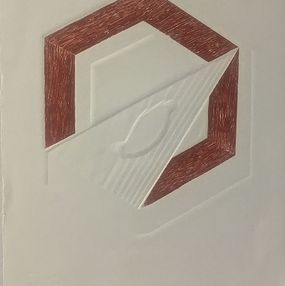
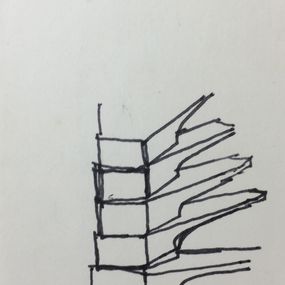
Fine Art Drawings - 13 x 10 cm Fine Art Drawings - 5.1 x 3.9 inch
$2,109 $1,054

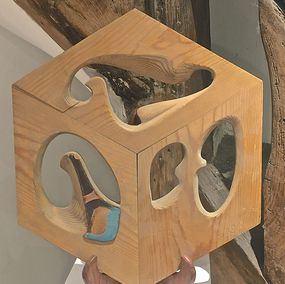
Sculpture - 40 x 40 x 1 cm Sculpture - 15.7 x 15.7 x 0.4 inch
$2,164
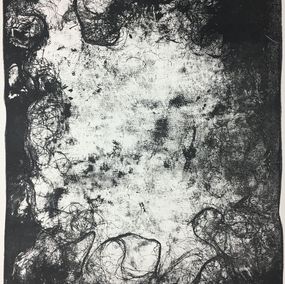
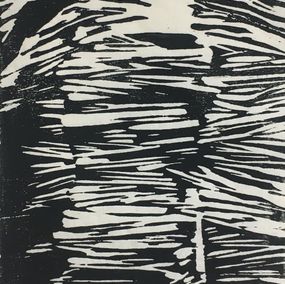
Fine Art Drawings - 19 x 13.5 cm Fine Art Drawings - 7.5 x 5.3 inch
$1,942
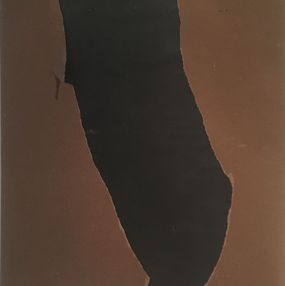
Design - 55 x 40 x 1 cm Design - 21.7 x 15.7 x 0.4 inch
$2,161
How does Artsper protect you?
Protect your purchase
We’re here to help you collect art securely. When you browse and buy on Artsper, you benefit from our guaranteed protections.
Buy works from the best galleries
We partner with the best art galleries. All sellers on Artsper have been carefully reviewed and approved by our team. All of our partner galleries respect our code of ethics.
Know what you’re getting
Each work on Artsper is studied and validated by our team before appearing online. Get personalized support Contemporary art specialists are available by phone and email to answer all of your questions about our works of art. Get personalized advice and curated suggestions for your collection.
Resell your artworks
As a private individual, you have the possibility to resell on Artsper your works acquired on Artsper. For more information click here.
Make an offer with Artsper
Negotiate prices
Price negotiation is possible. Like in a gallery, this allows you to open a discussion and purchase your works at your preferred price.
Get our help negotiating
Let our team handle the negotiations and get back to you once the best deal is made.
Order safely
Artsper’s satisfaction guarantee
With Artsper, you have the opportunity to return a work free of charge within 14 days of receipt if it does not suit you, for whatever reason. You will then receive a full refund for your order.
Protect your purchase with Artsper’s payment partners
All credit card payments are processed by Paybox, the trusted leader in payment processing for international businesses. Paybox ensures the highest level of security.
Get specialized support from Artsper in the event of a problem
On the rare occasion that a work of art arrives in a different condition than described, we will work to administer a return, refund, restoration or exchange for you. Our team will always keep you informed on the progress of your request and will go above and beyond to offer you personalized solutions.
To benefit from Artsper’s protections you must:
Place your order using one of Artsper's payment methods.
Report any issues to Artsper within one week of receiving your work.
Provide all requested photographic evidence of the problem (including the original artwork and packaging).
Artsper’s guarantee covers the following problems:
You receive a work that’s missing a described characteristic (such as a signature or a frame)
You receive a work with different characteristics than those described at the time of purchase
You receive a damaged piece of work
Your purchase is declared lost or damaged during transit
You receive a work that is a different in color than what you ordered
Your purchase is delayed
Why buy on Artsper?
Artsper gives you access to the largest catalog of contemporary artworks, from the best galleries (200,000 works, 25,000 artists, 2,000 partner galleries).
We select the galleries with which we collaborate. This demanding selection, operated by our team of experts, offers you several guarantees:
We also facilitate the search for works according to your preferences thanks to our intelligent features such as:
Or simply thanks to our filters on the catalog allowing you to refine your searches.
Our customer service is also at your service and responds within the shortest time!
Can I negotiate the price of an artwork?
For some artworks, you can negotiate the price. If the price of the work is negotiable, you have a “Make an offer” button under the “Buy this work” one.
To submit your offer, you must make a payment of the desired amount. Your offer will then be forwarded to the gallery, which reserves the right to accept or reject it. If your offer is accepted, it means that your order is confirmed by the gallery and they will prepare the artwork for shipment. If your offer is rejected, you will be refunded the total amount paid automatically. The gallery can also propose a counter-offer for the acquisition of the artwork.
If you have any questions, please feel free to contact us: [email protected].
Where can I have my order delivered?
Artsper delivers worldwide!
However, please note that once your order reaches its destination, it may be subject to VAT or other customs fees. These charges are beyond our control and you will be responsible for paying them (this is indicated at the ‘checkout’ first step).
Select the delivery address of your choice. Please make sure that someone is present to receive your order.
If your billing address is different to your delivery address you can specify this at the checkout.
Return and cancellation
You can return the artwork without needing to provide a reason or pay a penalty fee up to 14 days after receiving your order.
In the case that the right of withdrawal is exercised in the aforementioned time frame, the price of the artwork(s) purchased and the shipping costs will be reimbursed by us as soon as the gallery has received the artwork and notified us.
Artsper will manage the return of the work and will bear the cost of returns (which will either be paid by you and refunded by Artsper or directly paid by Artsper).
The artwork must be returned in perfect condition and in its original packaging (or equivalent).
The buyer exercises his right of withdrawal directly from MUMART, by sending an email to the address: [email protected].
How can I best showcase my work?
If you have bought a painting, a sculpture or a work on paper, find expert advice on its conservation and how to best enhace it: